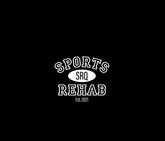The Ultimate Achilles Tear Physical Therapy Protocol
Today we're diving into the nitty-gritty of an Achilles tear and the ultimate physical therapy protocol to get you back in the game.
Picture this: You're in the heat of the game, running like the wind, and suddenly, snap – your Achilles gives out. The dreaded Achilles tear. Thankfully, the road to recovery is paved with science-backed strategies to get you back to 100%
Phase 1: Protection and Regeneration
First things first – protect that precious Achilles! In the initial stages, rest and very limited mobilization are key to kickstarting the healing process.
Some protocols call for Non-weight bearing (NWB) on crutches in splint and/or Achilles boot for at least the first 3 weeks. The goals here is to - Protect the repair, Maintain strength of hip, knee and core muscles and Manage swelling. This step is crucial for setting the foundation for a solid comeback.
Phase 2: Mobilization and Flexibility (Weeks 4-6)
Starting at around weeks 4-6, restoring ankle plantar flexion, inversion, and eversion becomes key. Once the initial pain subsides, it's time to get moving (gradually, of course). Gentle ankle range-of-motion exercises are introduced to maintain flexibility while avoiding overloading the healing tendon. Think of it as a dance between healing and preparation, orchestrated by the therapists at SRQSportsRehab.
-
Normalize gait as much as possible while in boot by utilizing a Shoe Leveler for the uninvolved side to prevent secondary musculoskeletal complaints.
-
Begin partial progressive weight-bearing on crutches in an Achilles boot with wedges (~1” in height each). Suggest gradually progress weight-bearing by 25% of body weight per week as tolerated until Full Weight-bearing (FWB) through the surgical side without pain and decrease height in heel wedge each week as you progress.
Phase 3: Strengthening the Achilles Powerhouse (Weeks 7-10)
Strengthening the Achilles tendon and surrounding muscles is the holy grail of recovery. Eccentric exercises take center stage here, gradually loading the tendon to build strength. This phase is all about reaching those objective measurement benchmarks, like pain-free single-leg calf raises and achieving at least 80% of your uninjured leg's strength. SRQSportsRehab's team guides you every step of the way, ensuring you're ready to face the challenges ahead.
Phase 4: Return to Sport Readiness (Weeks 11- 6 months)
Here comes the exciting part – gearing up for a triumphant return to the field! Dynamic movements and sport-specific drills are introduced, mimicking the demands of your game. But it's not just about feeling ready; it's about being ready. SRQSportsRehab's therapists employ cutting-edge technology to objectively measure your performance, comparing your speed, agility, and power to your pre-injury baseline. This data-driven approach ensures you're not just back – you're back with a vengeance!
Phase 5: The Victory Lap
Congratulations – you've conquered the return-to-sport Achilles tear journey! But before you go, remember that maintaining your newfound strength and resilience is key. SRQSportsRehab provides you with a personalized maintenance plan, guiding you on exercises and strategies to keep that Achilles roaring and ready for action.
In a world filled with misinformation and quick fixes, SRQSportsRehab.com stands as a beacon of evidence-based recovery. Our unwavering commitment to scientific principles, combined with expertise in sports rehabilitation, makes us the ultimate ally in your Achilles tear comeback story.
Trust in the process and let SRQSportsRehab guide you every step of the way. Your Achilles – and your game – will thank you for it!
Stay strong, stay resilient, and as always, keep chasing greatness.
References:
-
Khan, R. J., Fick, D., Keogh, A., & Cook, J. (2003). Tendon pathology in athletes with an Achilles tendon disorder. The Journal of Orthopaedic & Sports Physical Therapy, 33(7), 408-417.
-
Silbernagel, K. G., & Crossley, K. M. (2015). A proposed return-to-sport program for patients with midportion Achilles tendinopathy: Rationale and implementation. Journal of Orthopaedic & Sports Physical Therapy, 45(11), 876-886.
-
Kongsgaard, M., Aagaard, P., Kjaer, M., & Magnusson, S. P. (2005). Structural Achilles tendon properties in athletes subjected to different exercise modes and in Achilles tendon rupture patients. Journal of Applied Physiology, 99(5), 1965-1971.

